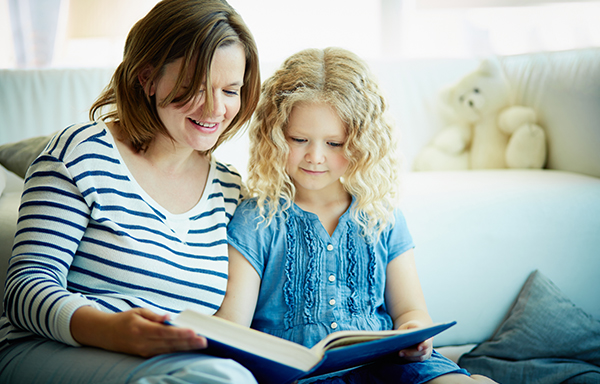How to write a social story
What is a social story?
A Social Story is a short book, written for your child, to help them deal with a social situation.
The goal of a social story is to prepare your child for something they might find tricky, before it happens; this can help to reduce anxiety, whilst giving them information about what is expected. It is also a great way to rehearse situations, to look for ways to solve problems and to feel calm and reassured.
How do I write a social story?
The beauty of a social story is that it can be specifically written for your child, focussing on the situation that they are finding difficult or want to rehearse. It may be the bed time routine, going to the hairdressers, or knowing how to behave during a class assembly.
There are a number of ingredients that make for a good social story:
From my perspective
Write the story so that your child can read it, as if they had written it. Use the 1st or 3rd person to achieve this
E.g. “I have my class assembly on Monday (1st person)
Or
E.g. “My class have their assembly on Monday” (3rd person)
Avoid using the 2nd person (“You will go to your class assembly on Monday”) – it sounds very directive and cannot be read from your child’s perspective.
Be positive
This is a good way to give a rule which advises your child about what they should do, rather than what they shouldn’t do.
For example, “I will sit quietly on a chair on the stage” is better than “I won’t run about on the stage”
Be clear and accurate
Think about the words you are using and make sure they cannot be misinterpreted. Clarity is key. Use vocabulary that is familiar to your child.
For example “I will sit on the stage” may be confusing if your child arrives and is expected to sit on a chair, on the stage.
Stick to facts and avoid opinions or guess work. For example, if you unsure whether you can attend the assembly, you could write “Some Mums and Dads will watch the assembly” rather than making any promises.
Describe how your child might feel or respond
Naming a difficulty is a great way of disarming anxiety. “I might feel nervous when I stand on the stage; this is Ok with everyone” describes the problem and affirms that this reaction is reasonable.
Coach
Follow this up with a gentle suggestion that ‘coaches’ your child to find a solution. For example “I will try and stay calm by….” Or “My teacher will help me by…”. Letting your child know that others are there to help can be reassuring as well as giving them permission to seek support.
Give a rule
The ‘rule’ might be an expectation about the way you would like your child to respond in this situation. For example “I will tell a grown up“ or ”I will quietly get down from the stage”
Use memorable sentences
When we are stressed, memory tends to be affected. Memorable rehearsed sentences form good ‘mantras’ that children can use to reassure themselves during these anxious times.
Let’s put that together:
I have my class assembly on Monday.
My Dad will be watching
I will go in to the hall with my class mates.
I will sit on a chair on the stage
I might feel nervous when I am on the stage. This is OK.
I can fiddle with a toy to help me to stay calm.
I can ask a teacher for help if I feel worried
At the end of the assembly, I will walk back to my classroom
Now we have the words….. here are a few more tips
Keep it simple
Use just one idea on each page, so that the information isn’t overwhelming.
Use visual support
Use clear pictures that explain the story is memorable and easy to understand. You can photographs or stock images, symbols or even draw your own pictures, as long as you are sure your child will be able to understand what they represent.
Personalise
A story is always more interesting when it involves favourite characters or hobbies. Include these as much as you can in your story.
Read it together
Find a quiet and calm time to look at the book together and use it as an opportunity to spend some time reassuring and preparing your child for that event.
Social Stories were created by Carol Gray. You can find out more about social stories on her website: https://carolgraysocialstories.com/
Have you seen our ‘Handwashing Story’? Download this for free on Speechlink’s Parent Portal
